- V
- GF
- NS
- DF
- View Recipe Key
How to Make Perfect Cacio e Pepe (VIDEO)
How to Make Perfect Cacio e Pepe (VIDEO)
Learn how to make perfect Cacio e Pepe, the classic Pecorino Romano and black pepper pasta from Rome once declared by the late Anthony Bourdain, “the greatest thing in the history of the world.”
This post contains affiliate links. Full disclosure is at the bottom of the article.
One of the most spectacular dishes I’ve ever eaten in Rome is also one of the easiest to reproduce at home. How often does that happen? I have been obsessed with Cacio e Pepe ever since I saw Anthony Bourdain passionately slurping from a bowl of the pasta many years ago in the Rome episode of No Reservations. He was so enamored with the classic Roman pasta dish that he even declared “[Cacio e Pepe] could be the greatest thing in the history of the world.”
A perfect plate of Cacio e Pepe at a restaurant in Rome.
When I first visited Rome, not long after watching that episode, Cacio e Pepe was the first pasta dish I ate in the city. Let me just say: I “got it” at first bite. Cacio e Pepe is such a simple dish on the face of it—a simple combination of pasta, cheese, pepper, and olive oil—yet it’s so incredibly aromatic, luscious, and rich. It’s creamy, warm, and ever-so-spicy. Cacio e Pepe is mac and cheese for grownups, the best hangover food, and the thing I’d probably request for my last meal on earth.
Although digging into Cacio e Pepe at home may not have the exact same charm as enjoying it in a busy Roman restaurant, I can tell you there are few dishes more satisfying to serve—and dig into—than a perfect bowl of Cacio e Pepe.
Making it starts by simply cooking pasta and warming up crushed peppercorns in olive oil. The magic happens as you start incorporating Pecorino Romano cheese into the pasta. When you do things right, the cheese melts and emulsifies into the simplest, yet most delicious sauce ever.
While Cacio e Pepe is the very definition of a quick and easy dish to make, you need to be familiar with some key steps to produce the best, most perfect version of the dish possible.
Cacio e Pepe is one of my favorite dishes of all time. I’ve been making it pretty much every week for years, so I’m happy to share all my best tips to help you enjoy this classic Italian pasta at home.
How to Make Perfect Cacio e Pepe VIDEO
Watch this fun video to see me make Cacio e Pepe and find out what are the key ingredients and techniques you need to learn to make the classic Roman pasta!
Helpful Tips for Making Perfect Cacio e Pepe
What does Cacio e Pepe mean?
Cacio e Pepe literally means “cheese and pepper” in Italian. The name of the Roman pasta dish is as simple as the dish itself: it describes the two main ingredients you need to make the recipe.
What is Cacio e Pepe sauce made of?
A bit of olive oil, some crushed black pepper, a generous amount of Pecorino Romano cheese, and some pasta cooking water. That’s it!
Learn more about how these ingredients come together like magic to create the silkiest, cheesiest sauce ever, below.
Where is Cacio e Pepe from?
Cacio e Pepe is a classic pasta dish from Rome, Italy. Cacio e Pepe is said to be one of the four iconic pastas of Rome, along with carbonara, amatriciana, and alla Gricia.
What makes Cacio e Pepe so creamy?
The two ingredients that make Cacio e Pepe pasta so creamy are:
- Pecorino Romano cheese, a sharp, aged cheese made with sheep’s milk
- Starchy pasta cooking water
While pasta cooks, it releases starch into the cooking water. This starchy water is key to melting the cheese, emulsifying the sauce, and binding the black pepper to the pasta.
Is there any butter or cream in authentic Cacio e Pepe?
Authentic Cacio e Pepe does not use butter or cream. Neither of these ingredients is required to create the rich, creamy, silky Cacio e Pepe sauce. What you need to achieve perfect Cacio e Pepe isn’t more fat but the right technique! (And I’m here to help you with that!)
The Right Pasta for Cacio e Pepe
The traditional pasta used for Cacio e Pepe is spaghetti alla chitarra (also called tonnarelli). It’s a thick, long pasta with a square shape. This type of pasta can be a bit harder to find in regular grocery stores, but it’s readily available in Italian stores and online.
You can also use spaghetti—but not spaghettini, because you need a slender but thick pasta that cooks in 12 to 14 minutes. Linguine and bucatini also work.
Left: Tonnarelli (Spaghetti alla Chitarra); Right: Spaghetti
When shopping for the best pasta to make Cacio e Pepe, look for these two quality indicators:
1. “Tafilata al Bronzo” – Bronze-Cut (or Bronze-Die) Pasta: This type of pasta is extruded through bronze dies, which are perforated metal plates that cut and shape the pasta. These bronze molds produce a finished noodle with a rough, porous texture, which attracts and absorbs pasta sauces. This texture is perfect for Cacio e Pepe: the pasta’s creamy sauce perfectly sticks to strands of bronze-cut pasta, making the dish even more delicious.
Most grocery stores sell bronze-cut pasta. Look past big multinational brands and find packaging with Italian writing on it. Most bronze-cut pasta brands are sold in intricately designed paper bags instead of boxes.
Some big brands, such as Barilla, have released bronze-cut lines of pasta. These are often labeled “artisanal.” Again, look for the words “bronze-cut” anywhere on the packaging to make sure you’re getting the right thing.
2. “Essiccata Lentamente a Bassa Temperatura” – Slow-Dried at a Low Temperature: Industrially made pasta is made in extremely large quantities and needs to dry quickly so it can be packaged, shipped, and sold as fast as possible. For pasta to dry quickly, it needs to be exposed to higher temperatures, which evaporates moisture faster. This prevents the pasta from properly developing its starch proteins, which, in turn, produces pasta with a poorer texture.
Slow-dried pasta is, well, slow-dried, and this is done at a lower temperature. This allows the proteins to properly develop, which creates a deliciously chewy, toothsome pasta. The slow-drying process also produces pasta with a rougher, chalky-looking texture that allows sauce to better cling to the surface of the pasta and absorb the flavors surrounding it too.
Slow-dried pasta is readily available in most grocery stores. You can look for the words “slow-dried” anywhere on the packaging, but the most obvious tell-tale sign is the texture of the pasta: if it’s shiny and smooth, it’s quick-dried. If it’s rough, matte, and chalky-looking, it’s most likely slow-dried and bronze-cut.
Slow-dried pasta is a bit more expensive than industrial pasta because of the lengthier drying process. You could, for example, pay $1 to $2 more for a 12 oz bag of slow-dried pasta. While I can’t say the extra investment is always required, I absolutely urge you to splurge on bronze-cut, slow-dried pasta to make Cacio e Pepe. A recipe that uses so few ingredients is only as good as its ingredients are!
Never ever throw away that pasta cooking water!
Pasta starch is key to creating a silky smooth Cacio e Pepe sauce. Indeed, while pasta cooks, it releases starch into the cooking water. This starchy water helps with melting the cheese, emulsifying the sauce, and binding the black pepper to the pasta.
You’ll get some of that starchy goodness from the pasta cooking water, and then you’ll get even more of it released straight into your skillet as the pasta finishes cooking. In my recipe, you only cook the pasta halfway through the classic way, in a large saucepan or a pot, and then you transfer the partly cooked pasta straight from the pot to the skillet with the olive oil and black pepper. You then add some of the pasta cooking water to the skillet, and the pasta finishes cooking in considerably less water. This concentrates the starch in the water and becomes the base of the creamy sauce.
Starchy pasta cooking water produces the creamiest Cacio e Pepe pasta!
This Italian cooking process is known as risottatura—yes, it’s the same technique used to make risotto. Think of how risotto becomes creamy as it cooks, even before you add cheese to the dish. This is because risotto rice has a high starch content, which is released as the rice cooks. The same happens when you finish cooking Cacio e Pepe pasta in a skillet. Makes sense, doesn’t it?
Note that you’ll get much better results (i.e., a creamier sauce) if you use slow-dried pasta. My tips about picking the right pasta to make Cacio e Pepe are right here!
The Right Cheese for Cacio e Pepe
Cheese is front and center in this recipe, so to make perfect Cacio e Pepe, you need to use authentic Pecorino Romano cheese. Pecorino cheese is a hard, salty, aged Italian cheese made with sheep’s milk. This cheese was originally made in Lazio, the province where Rome is located. This is most certainly why this is the cheese of choice to make Cacio e Pepe, a quintessential Roman pasta dish.
Pecorino Romano is a protected designation of origin (PDO), which means that the cheese must “be produced, processed, and developed in a specific geographical area, using the recognized know-how of local producers and ingredients from the region concerned” (source). Authentic Pecorino Romano cheese can be recognized by its off-white color and stamped rind. It is readily available in most grocery stores, sold in wedges.
Authentic Cacio e Pepe recipes exclusively use Pecorino Romano cheese. The cheese’s sharp saltiness perfectly seasons the sauce, and its aroma is synonymous with the classic pasta dish. Many chefs and cooks like to use some Parmigiano Reggiano cheese as well. Although this isn’t authentic per se, it’s a very common substitution.
Personally, I most often make Cacio e Pepe exclusively with Pecorino Romano cheese, but sometimes I do swap in a third of Parmigiano Reggiano cheese. I like that Parmigiano Reggiano adds some warmth and softens the more edgy flavor of Pecorino Romano cheese. To me, this combination of cheese leads to a dish separate from authentic Cacio e Pepe because the flavor is quite different, but it’s still extremely delicious all the same.
How to Grate Pecorino Romano to Make Perfect Cacio e Pepe
You might not suspect this, but the way the cheese is grated is key to making perfect Cacio e Pepe. Indeed, if the cheese is grated too coarsely, it won’t emulsify into a smooth sauce, and you’ll end up with blobs of coagulated cheese. If you end up with such a result, I’m sad to say there’s just no way to fix it. Sure, the dish won’t be super appealing, but it remains totally edible. Don’t throw it away! Enjoy―and make sure to use the following tips next time you make Cacio e Pepe.
I’ve tested so many grated cheese textures over the years, and I’ve concluded that the best tool to grate Pecorino Romano to make perfect Cacio e Pepe is a Microplane. A Microplane produces wonderfully fluffy clouds of super thinly grated cheese. When you gradually add this finely grated cheese to the pasta, it seamlessly melts into a perfectly smooth sauce.
Some stores sell grated cheeses, and while this is a handy solution for other pasta dishes, I do not recommend using pre-grated cheeses to make Cacio e Pepe. Pre-grated cheeses can be dry and harder to melt. Anti-clumping agents are sometimes added to grated cheeses too, which are guaranteed to affect the texture of your sauce.
Conclusion: Buy a wedge of authentic Pecorino Romano cheese and grate it yourself using a Microplane. By following these two simple tips, you’ll be that much closer to producing perfect bowls of Cacio e Pepe!
Do weigh cheese for Cacio e Pepe—don’t scoop it
Measuring cheese in cups for making Cacio e Pepe is incredibly imprecise, especially if the cheese is grated using a Microplane. Microplane-grated cheese is so fluffy, it’s impossible to accurately measure it by packing it into cups.
To accurately measure the cheese you need for making Cacio e Pepe, make sure to weigh it.
How to prevent cheese from clumping in Cacio e Pepe
You can prevent cheese from clumping in Cacio e Pepe using these three simple tips:
- Grate your cheese using a Microplane. Finely grated cheese breezily melts through the pasta without clumping.
- GRADUALLY incorporate the cheese into the pasta. This is the most important tip! Never add the cheese to Cacio e Pepe all at once. This will automatically lead to clumps. Instead, sprinkle the cheese all over the surface of the pasta, large pinches at a time, stirring with a spatula until the cheese is melted and incorporated before adding more. Be patient and keep that process going until all the cheese is incorporated.
- Keep the sauce simmering throughout. The pasta cooking water in your skillet should be energetically simmering―but not boiling—when you start incorporating the cheese into the pasta. This simmer—and your constant stirring—will ensure the cheese will properly emulsify into a silky-smooth sauce.
For the best flavor, use whole peppercorns
To make Cacio e Pepe, you want coarsely ground black pepper—not super finely ground, almost powdery black pepper. For the best flavor and texture, start with whole peppercorns and lightly crush them using a mortar and pestle or a rolling pin. Freshly crushed peppercorns will deliver their full aroma to the sauce and create a tastier Cacio e Pepe.
Make sure to crush extra peppercorns for sprinkling over the dish right before serving. The combination of cooked and fresh black pepper allows Cacio e Pepe to fully develop its enticing aromas.
Is there meat in Cacio e Pepe pasta?
There is no meat in Cacio e Pepe; it’s a vegetarian dish. The recipe is made with only four ingredients: pasta, cheese, black pepper, and olive oil. While you’ll find some recipes that do incorporate fried pancetta or guanciale, the use of cured meat in the dish isn’t authentic.
Looking for even more authentic pasta recipes?
Easy authentic Italian pasta dishes are perfect for weeknight dinners: simple ingredients create irresistible dishes the whole family will love. Find delicious inspiration in this pasta recipe collection!

Perfect Cacio e Pepe Pasta Recipe
Ingredients
- 2 tbsp extra-virgin olive oil
- 1 tsp coarsely ground black pepper
- 6 oz dry Spaghetti alla Chitarra (also called Tonnarelli) or regular spaghetti (NOT spaghettini) (see note)
- 2 oz finely grated Pecorino Romano cheese
Instructions
- In a medium nonstick skillet, heat the olive oil over medium heat, then add the coarsely ground black pepper. Stir until the crushed black pepper is fragrant and just beginning to sizzle. Turn off the heat and leave it to rest while you cook the pasta.
- Bring a large saucepan of heavily salted water to a boil. Add the pasta and set a timer for HALF the cooking time indicated on the packaging. When the cooking time is done, use kitchen tongs to transfer the pasta to the skillet with the black pepper. DO NOT DISCARD THE PASTA WATER.
- Add 1 cup of the pasta water to the skillet with the pasta and black pepper. Turn the heat back on to medium-high. Once the water simmers, turn the heat back down to medium. Keep cooking the pasta, stirring frequently, for the remaining cooking time, as indicated by the manufacturer. (i.e. If the total cooking time is 12 minutes and you cooked the pasta for 6 minutes at the previous step, then you need to keep cooking the pasta for 6 minutes more in the skillet.)The pasta should always be swimming in water but not be submerged in it. Add more pasta water as needed.
- Taste a strand of the pasta. If it still tastes raw inside, keep cooking for a few more minutes. If it’s al dente (tender with a firm bite), you can start adding the cheese. The key to creating a smooth sauce is to add the cheese VERY SLOWLY, one generous pinch sprinkled all over the surface of the pasta at a time. Stir vigorously with a spatula until the cheese is incorporated, then add more. There should always be enough liquid to melt the cheese in, and that liquid should always be simmering, which helps melt and incorporate the cheese. Keep adding a bit more pasta water as needed, but don’t drown the pasta or your sauce will be too watery.
- The process to incorporate the cheese should take about 2 minutes. When you’re done adding the cheese, turn off the heat, give the pasta one last good stir and divide between warm bowls. Sprinkle with additional Pecorino Romano cheese and black pepper, and serve at once.
- Make sure you’re ready to enjoy Cacio e Pepe right when it's done: The cheese sauce will quickly thicken and “set” as it sits, so this is a dish that waits for no one.
- NOTE: The traditional pasta used for Cacio e Pepe is Spaghetti alla Chitarra (also called tonnarelli). It’s a thick, long pasta with a square shape. This type of pasta can be a bit harder to find in regular grocery stores, but it’s readily available in Italian stores and online.You can also use spaghetti—but not spaghettini, because you need a slender but thick pasta that cooks in 12 to 14 minutes. Linguine and bucatini also work.It's best to use bronze-cut pasta because the rough surface of this type of pasta allows the cheese sauce to perfectly adhere to it. Bronze-cut + slow-dried pasta is even better, because this type of pasta releases more starch, creating a creamier, silkier sauce.Read all my tips about picking the right pasta for making perfect Cacio e Pepe right here.
Video
Did you make this?
Tell me how you liked it! Leave a comment or take a picture and tag it with @foodnouveau on Instagram.
Disclosure Notice: This site is a participant in the Amazon Associates Program, an affiliate advertising program designed to provide a means for the site to earn fees by linking to Amazon and affiliated sites.
If you click on an affiliate link, I may earn advertising or referral fees if you make a purchase through such links, at no extra cost to you. This helps me create new content for the blog–so thank you! Learn more about advertising on this site by reading my Disclosure Policy.
Author: Marie Asselin

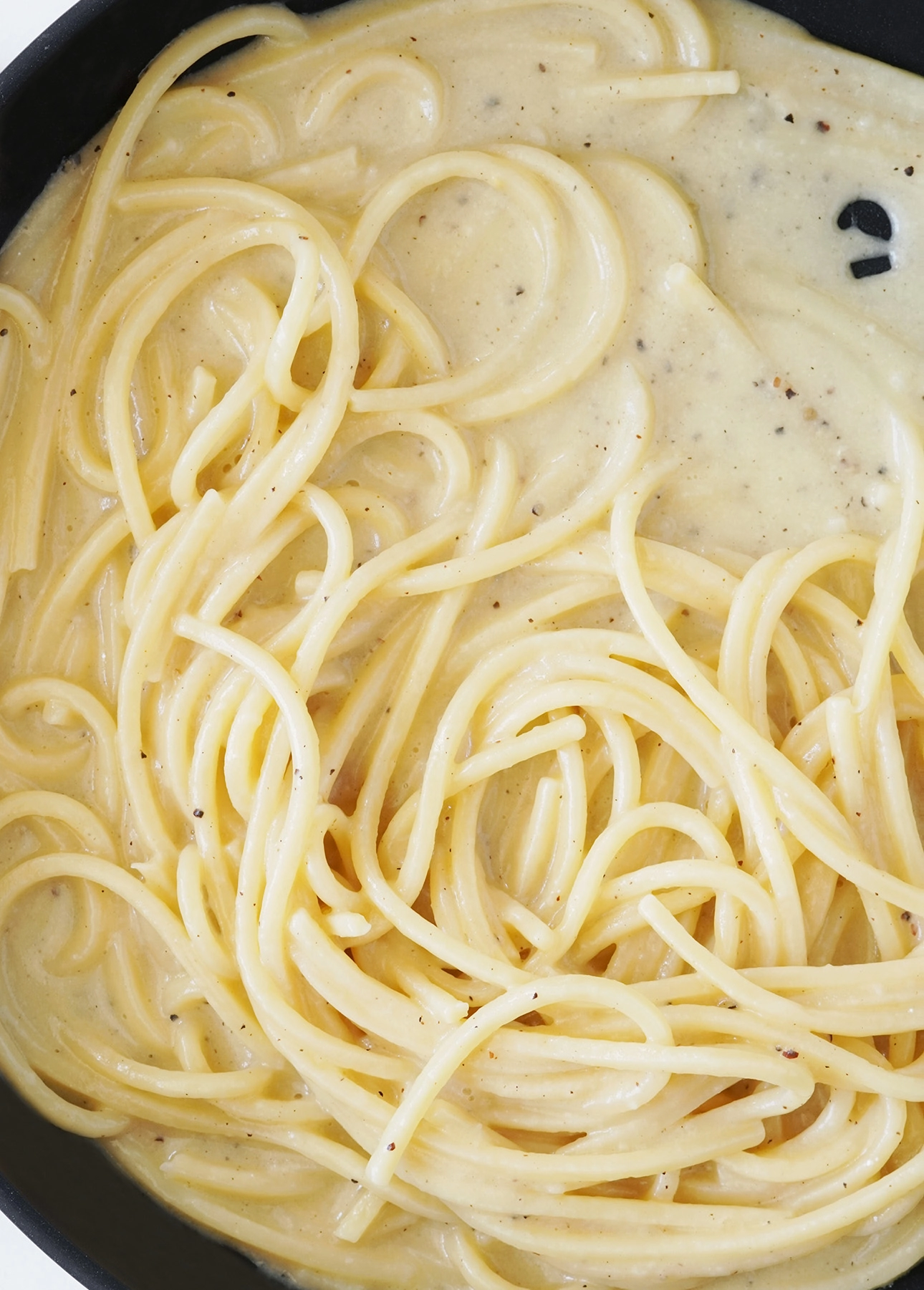
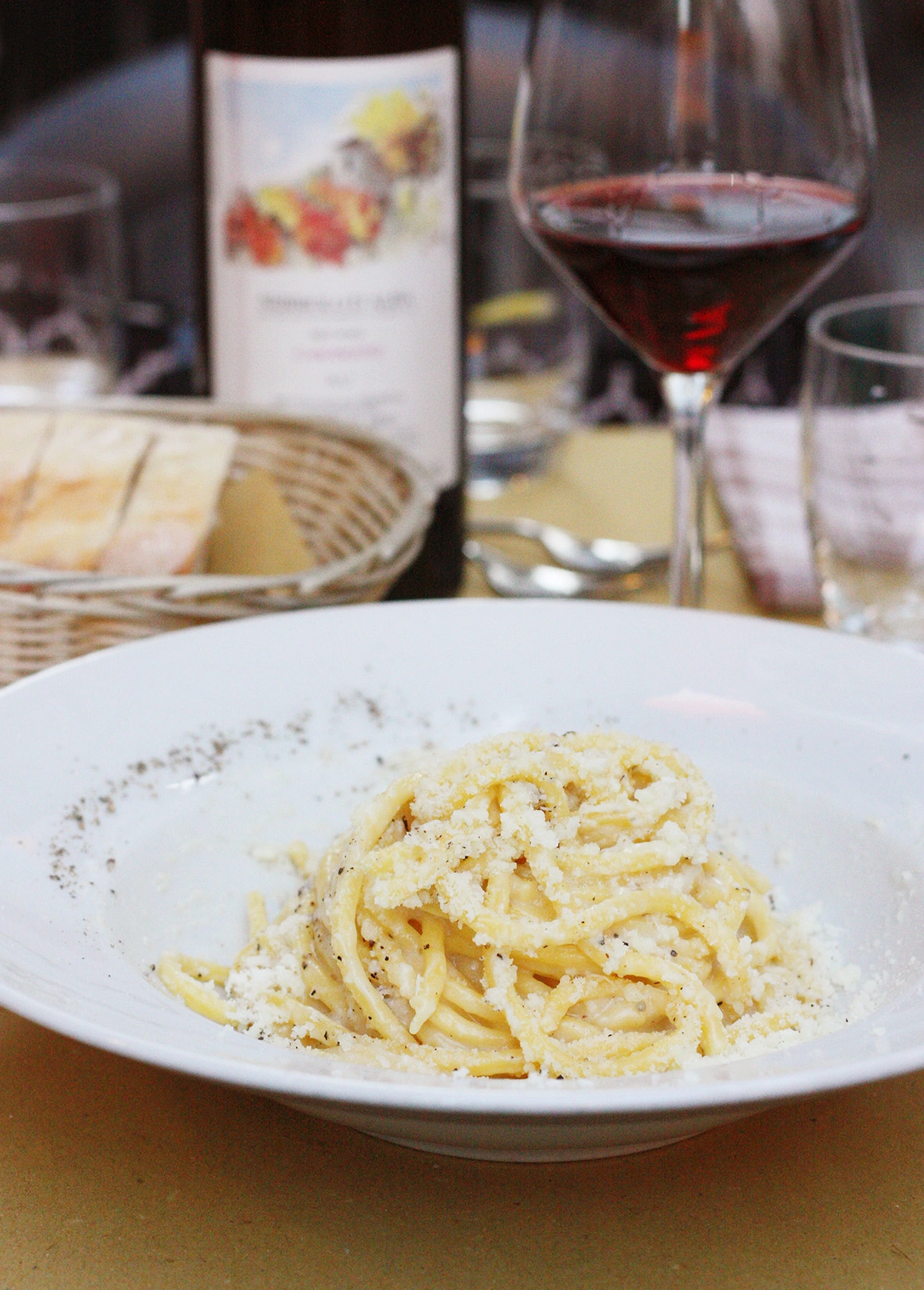
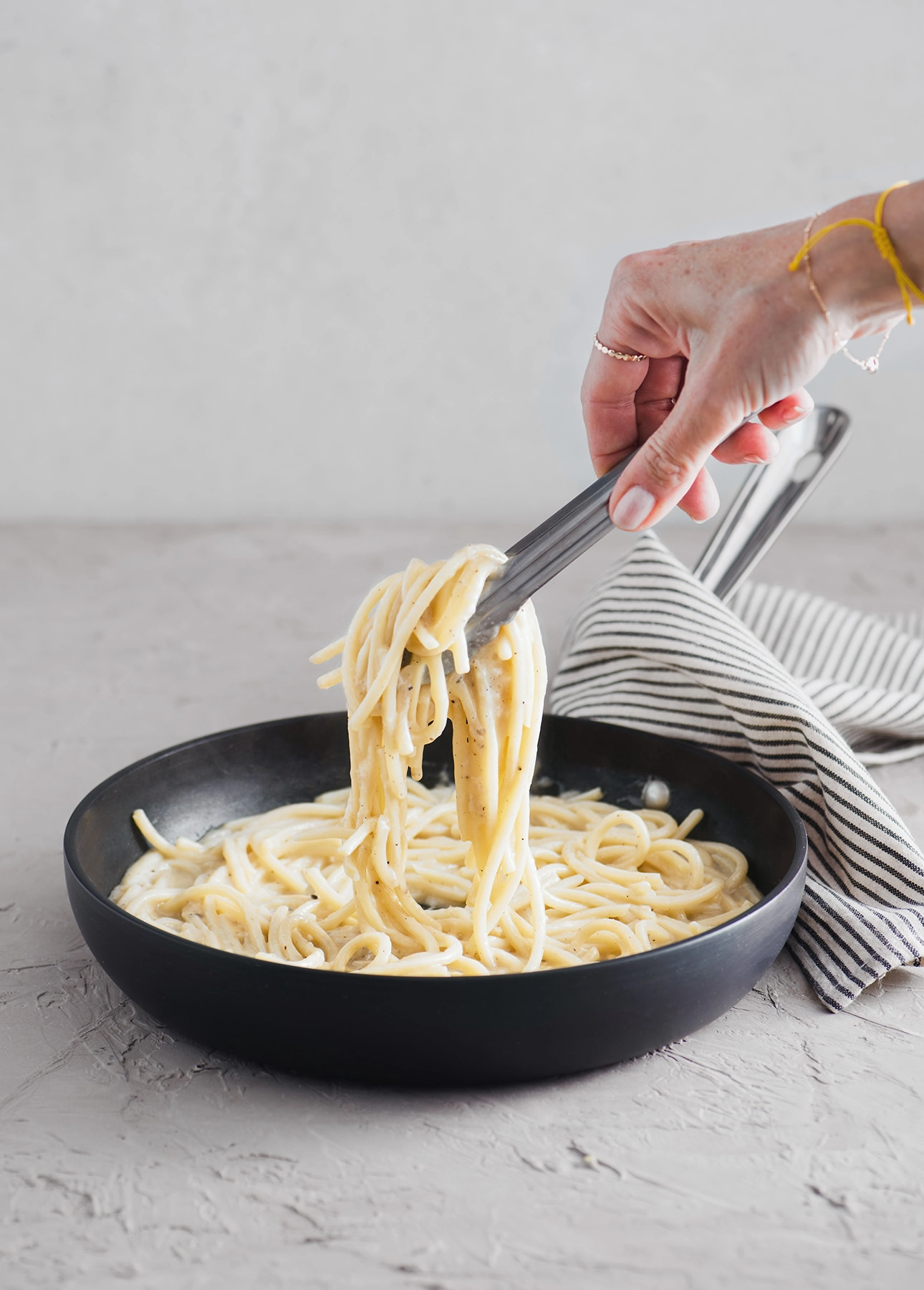
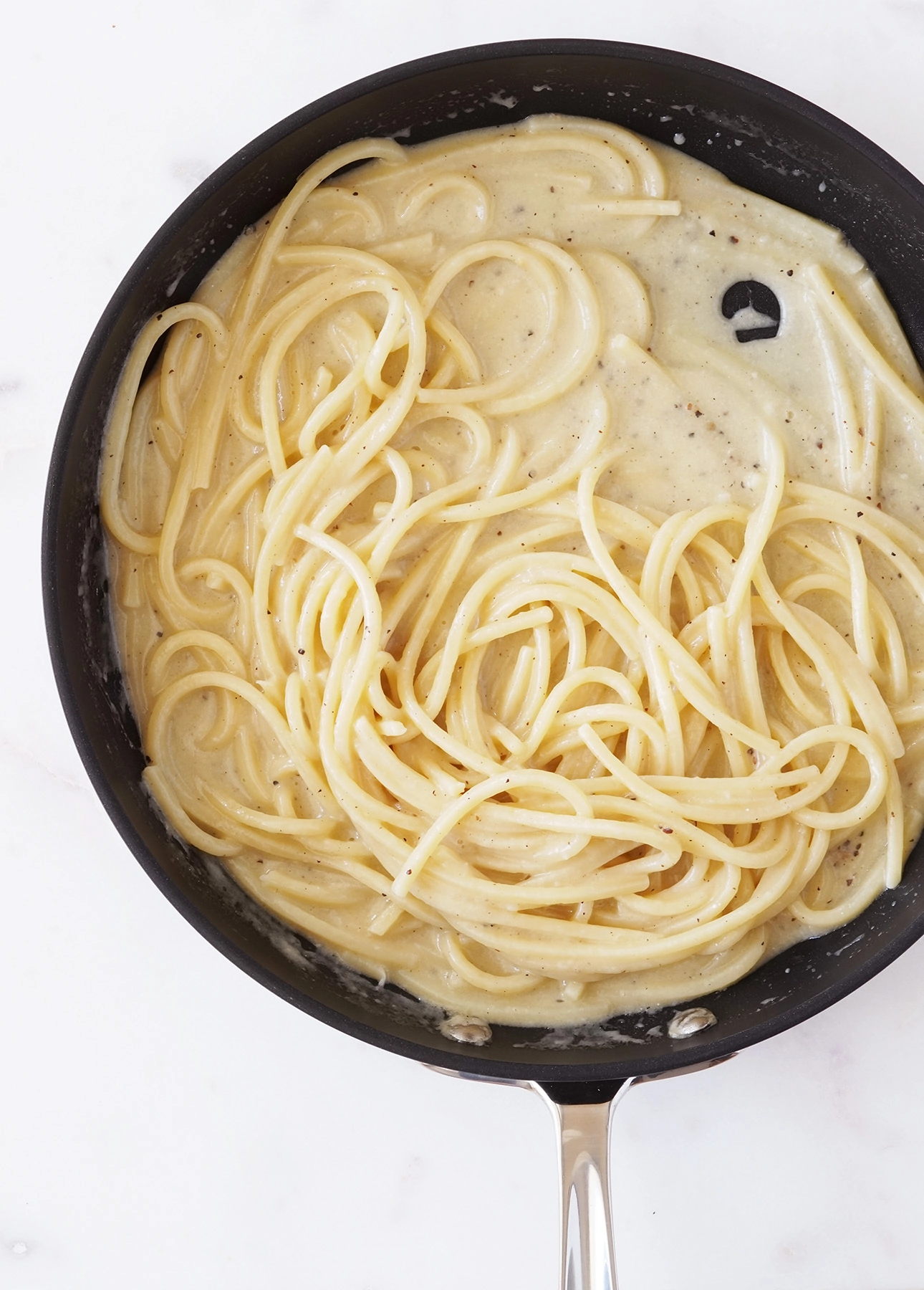
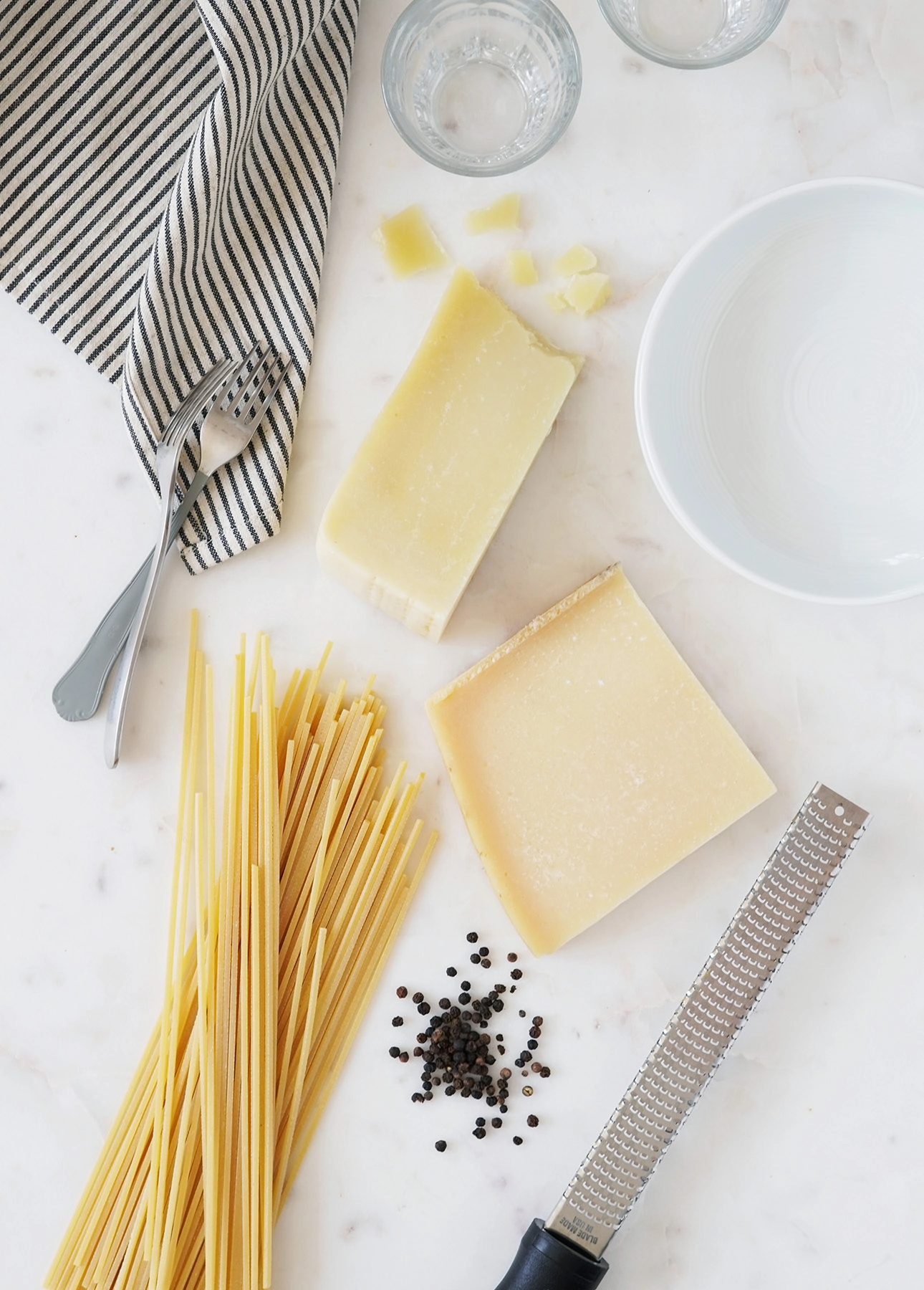
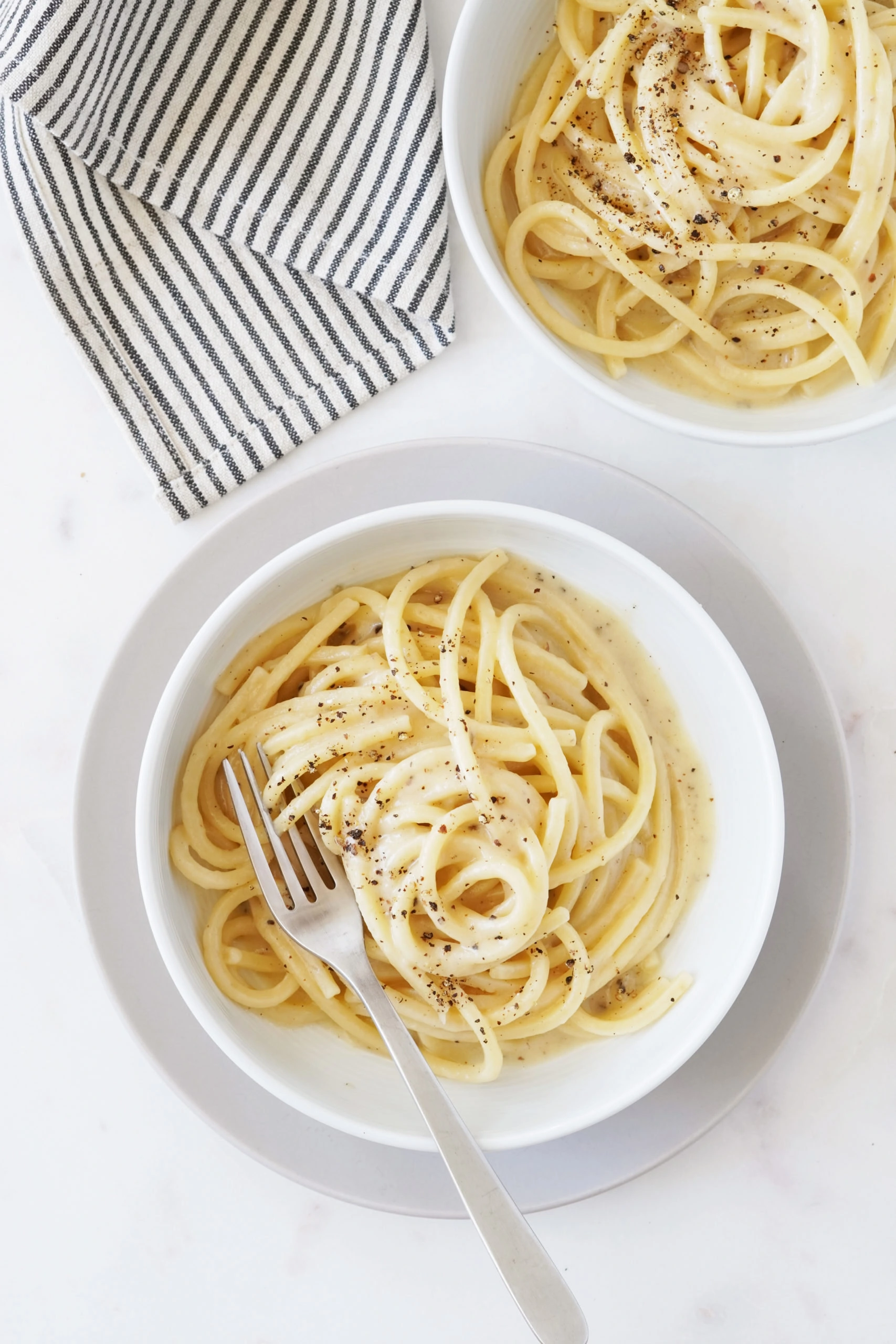
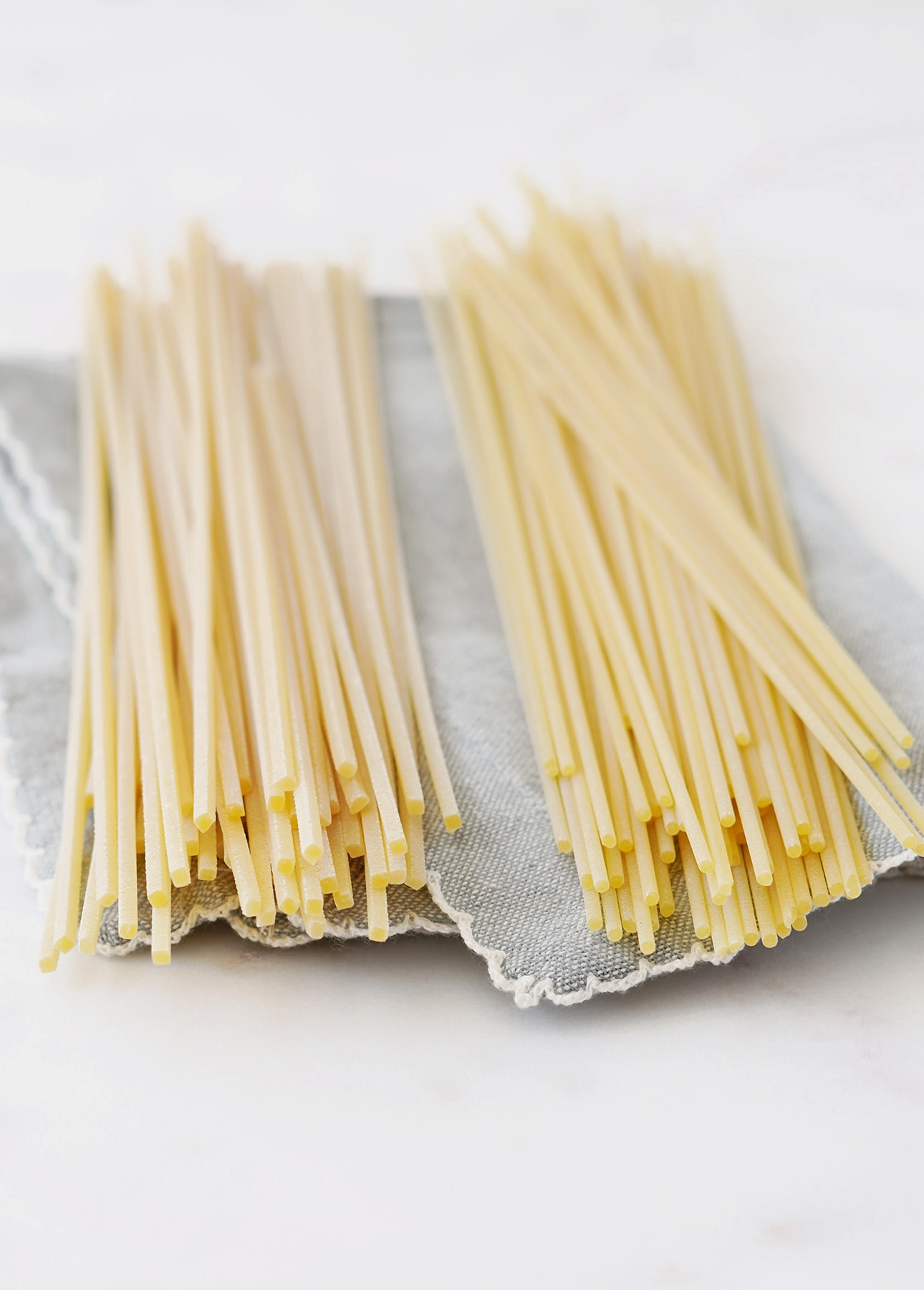
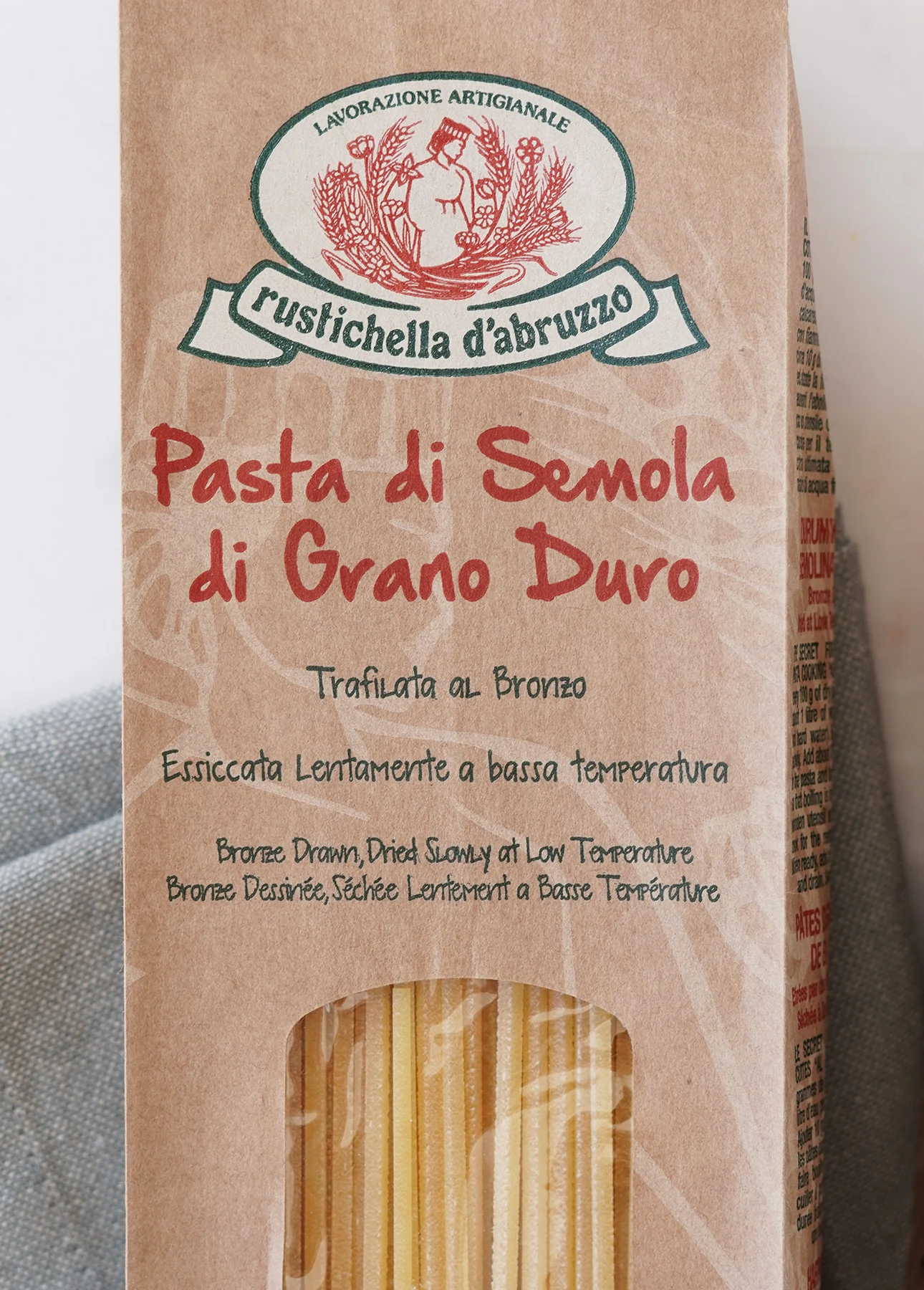
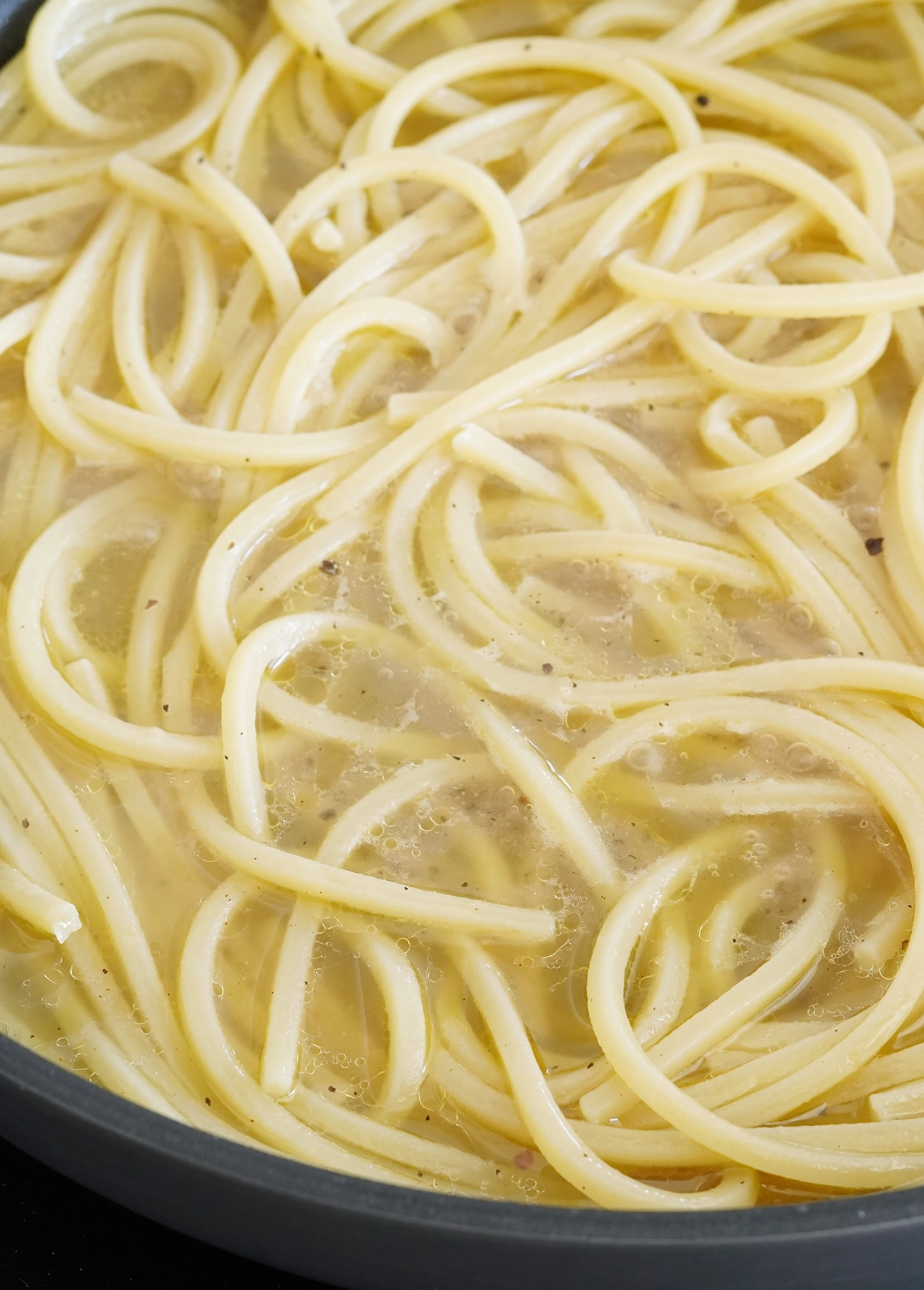
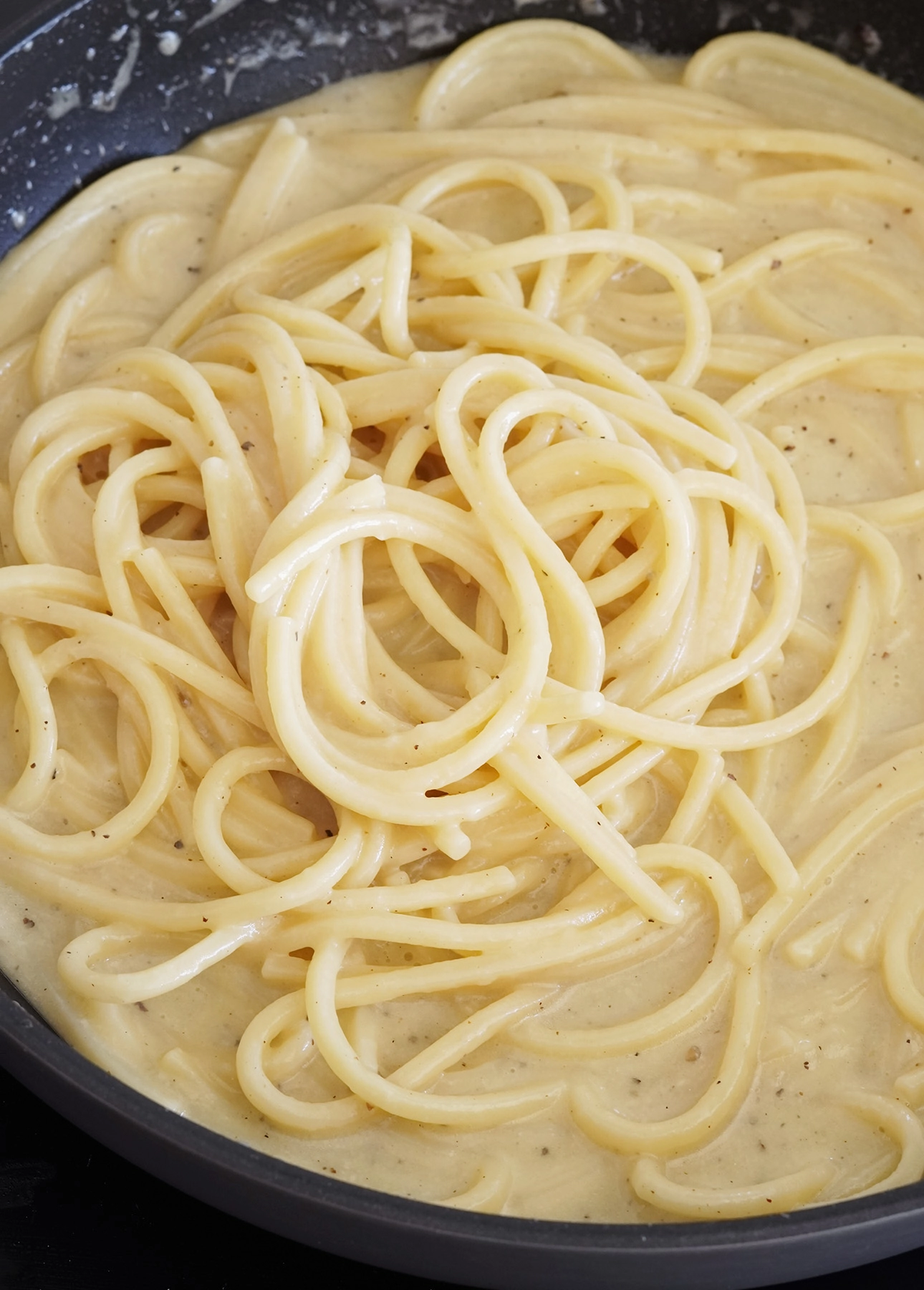
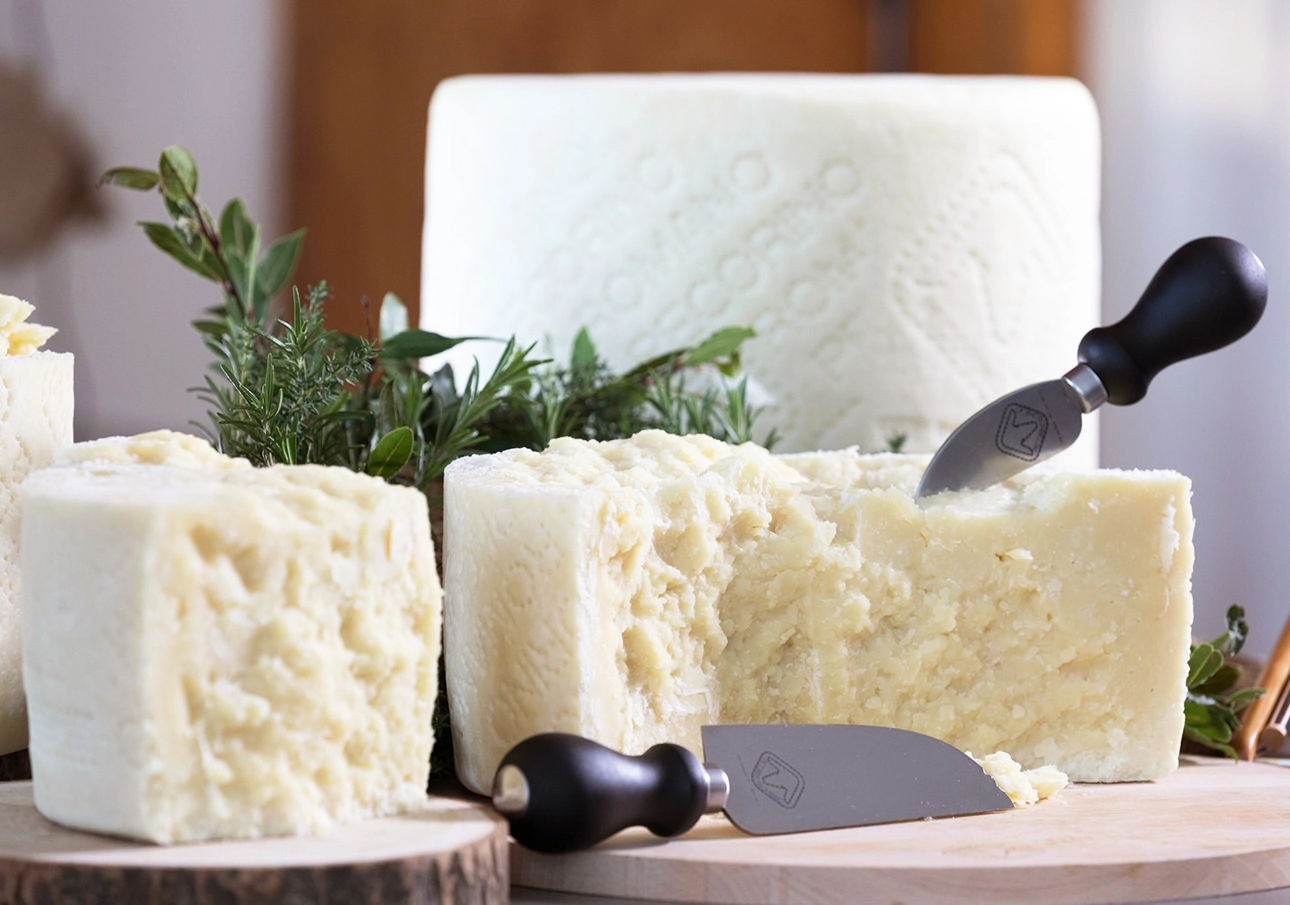
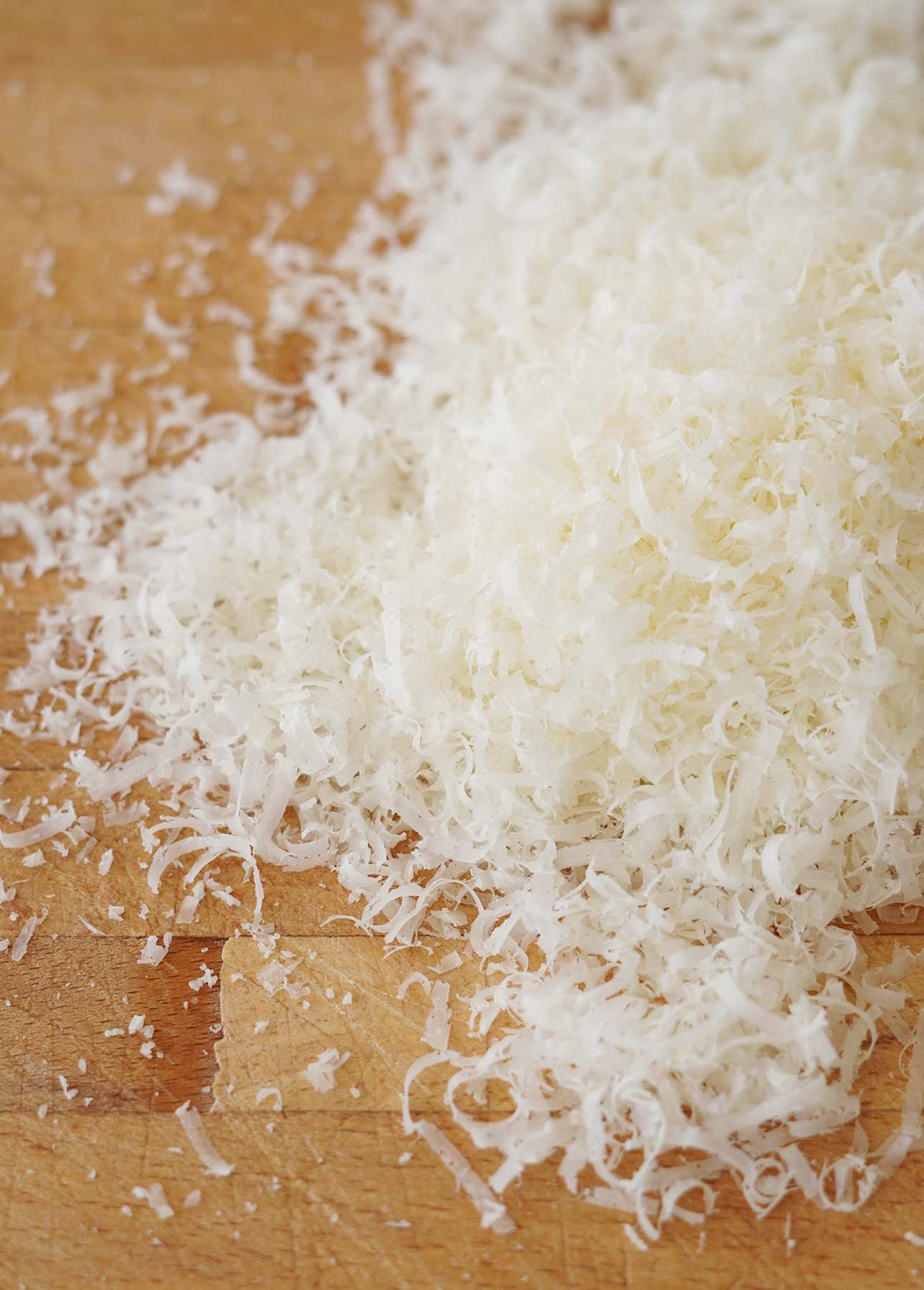
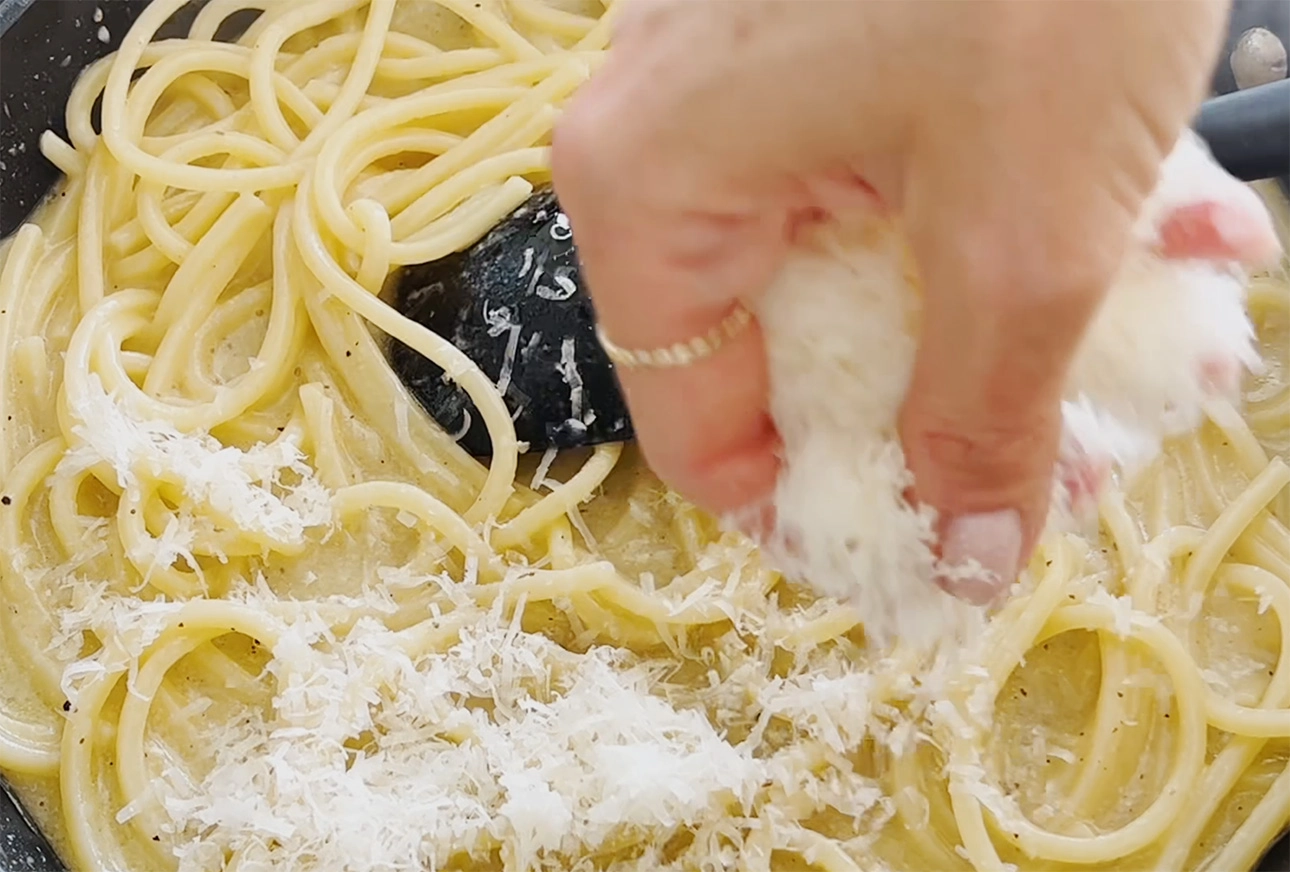
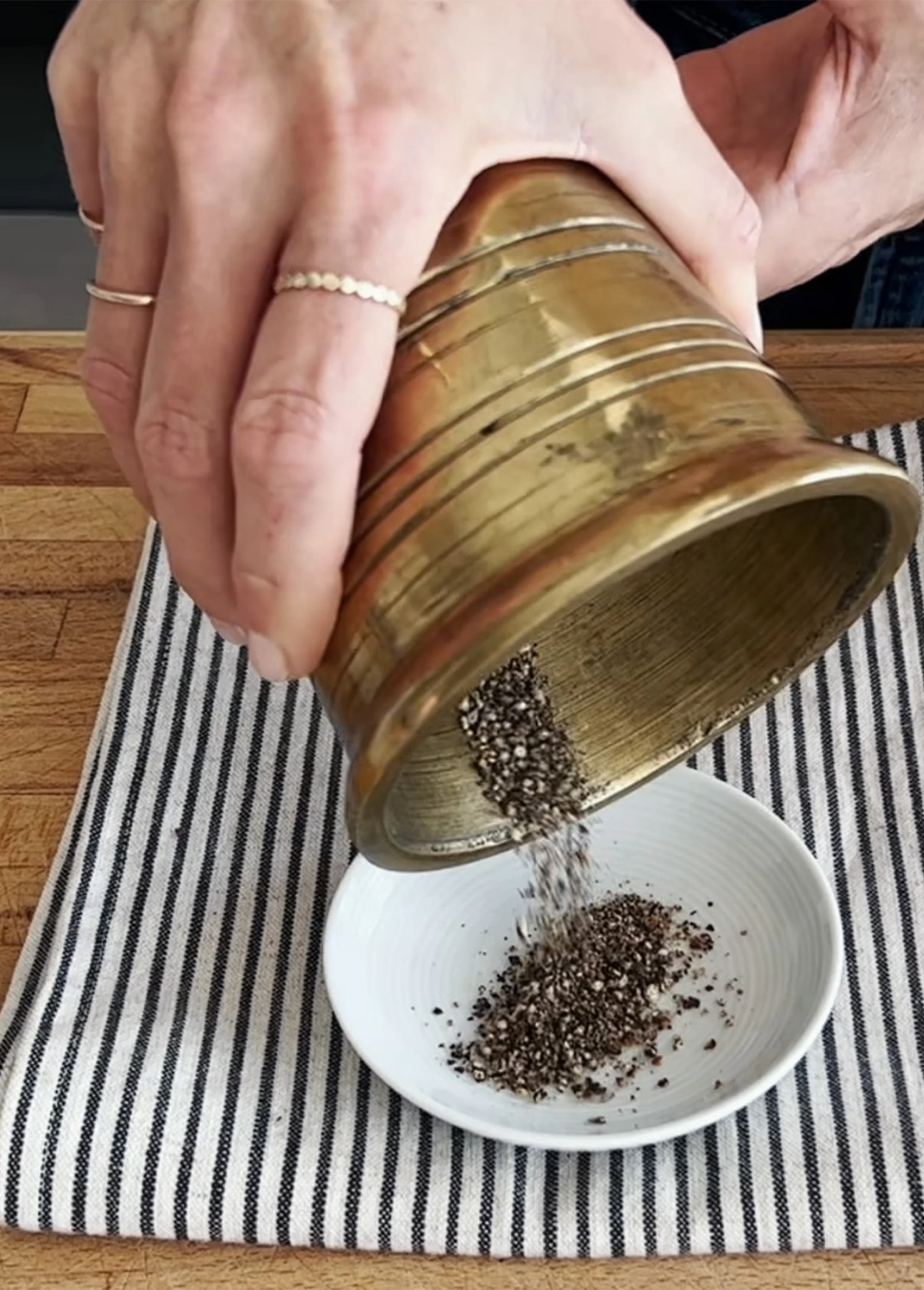

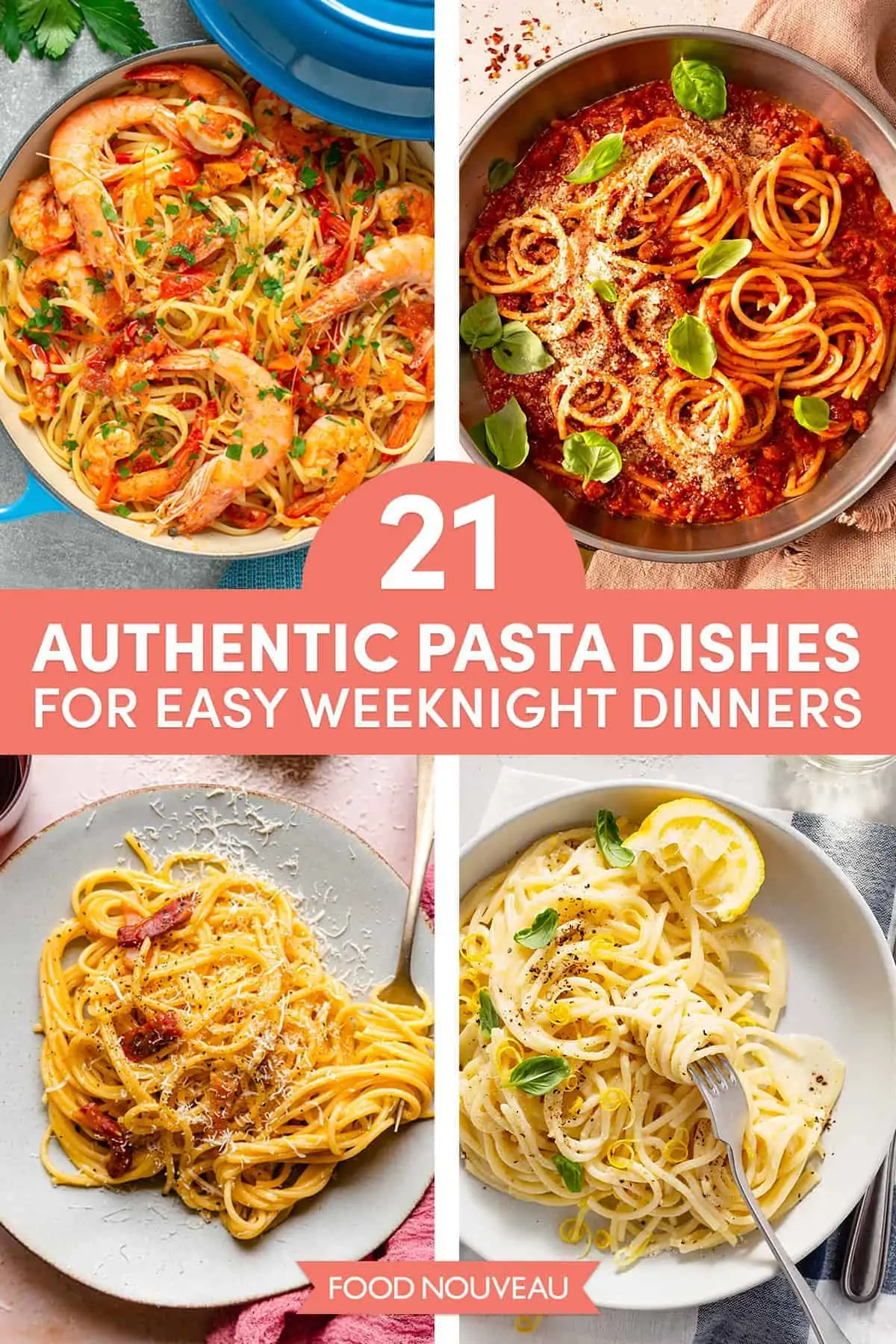

I have not made your version yet. I made a combo of several cacio recipes to get technique down yesterday, but still not creamy enough., I will try yours in a few days. Yours is the first recipe I’ve seen that didn’t call for butter or a lot of oil. Yeah!!! Any tips for reheating? I always make a smidge too much.
Hey Candice! NO BUTTER should ever go in Cacio e Pepe, it’s simply not required to get a super creamy, delicious result. To reheat Cacio e Pepe, I simply put it back into a nonstick pan over low heat, add a tablespoon or two of water, then reheat slowly, coaxing the noodles using a spatula until they loosen back up. You may have to add just a bit more water depending on the quantity of pasta you’re reheating, but be careful not to add too much to make sure you won’t lose that delightful creaminess and punchy flavor that comes from the cheese. Hope this helps!
Having trouble keeping the pasta hot enough to serve. What’s the trick.
Warm up your serving bowls before you serve the pasta. Also make sure everyone’s sitting down and ready to eat before you serve the pasta, that way you get to enjoy it hot, straight from the pan. Hope these tips help!
Very simple but creative and extremely tasty
Kids friendly too
Thanks Carol!
So delish and easy! Very rich in taste and a big hit among my friends
Everyone I serve this pasta to falls in love with it. This is the power of simple Italian recipes! 😍
This recipe is so rich yet simple and seems like a dish that everyone will enjoy. Looking forward to trying it.
Cacio e Pepe is definitely a crowd-pleasing dish! I hope you’ll give it a try Moop.
The casio e pepe came out really great! Your recipe is easy and fuss-free; I love a great, simple pasta dish. Thanks so much; we will definitely make it again.
Thanks so much Jenny! Happy the pasta turned out well for you.
Thank you for the detailed instructions to make Cacio e Pepe. It came out perfect (and no clumping!)
Yay!! Perfectly smooth and creamy Cacio e Pepe is such a joy to eat! 😍
This was one of our favorite pasta dishes when we visited Italy and your recipe brought back so many memories. Now I can make it whenever I want thanks to your easy to make and delicious recipe!!
Cacio e Pepe is such a memorable pasta dish. Happy to help you reminisce about such delicious travel memories!
This is an easy, simple, but delicious dish to make and I am sure everyone will love it too!
Yummy!
This is a really popular dish, Amy! I hope you’ll give it a try, your family will for sure be happy you did 😊
Oh my word!!! This speaks to my heart, my soul! I LOVE this pasta so much! Such a simple recipe that’s unforgettable!
Nobody can resist cheesy pasta! 😍